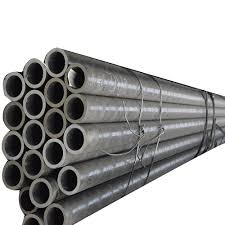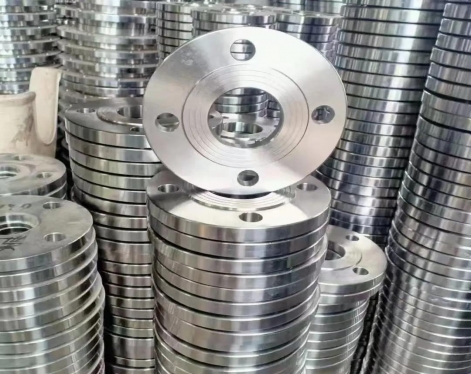The material medium transported in the welded pipe(such as stainless welded pipe) may cause leakage due to corrosion, erosion, vibration, seasonal and underground changes and other factors. If the welded pipe is not repaired and processed in time, leakage will increase, causing material loss and environmental pollution; if the material volatilizes toxic, flammable, and explosive gases, it may cause accidents such as fire, explosion, poisoning, personal injury, etc., resulting in production losses.
Leakage accidents in public engineering pipelines will cause inconvenience to the lives of users if water, fuel, gas, or steam are cut off. It is extremely important to promptly deal with leaks in pipelines in private enterprises and public projects. It is the key to ensuring safe, stable, long-term, full-load and continuous production.

Measures to prevent welded pipe leakage
1. Welding method
For various reasons, such as welding quality defects, pipeline medium corrosion, medium erosion during long-term use, external corrosion, etc. Depending on the characteristics of the leak, different plugging methods are adopted. In addition, due to production needs, some production cannot be stopped, or some pipelines are difficult to empty or replace, which involves plugging the pressurized medium. Correct leak plugging methods can quickly and safely deal with leaks, minimize production shutdowns, reduce property losses, and ensure environmental safety.
2. Sticking and blocking method
The bonding method refers to a method of using adhesive to treat pipeline leaks. The pipeline medium can be metal or non-metal. This method does not require fire and is safe. It is suitable when the medium is flammable, explosive and dangerous. It is used in the environment. The application condition is that it must be used when the leakage volume is relatively small.
3. Binding method
The binding method is called the universal leak-stopping method. It has a wide range of applications, does not require fire, is safe, convenient and quick. This method has been extended to a variety of methods, such as wire bundling, steel strap bundling, clamping, etc. The application of this method must be that the pipeline is strong enough not to be corroded and can withstand the clamping force of wires, steel straps, clamps, etc.
Sealing material selection:
The selection is based on the medium characteristics and temperature and pressure conditions of the pipeline. Generally, softer materials are selected. For media with low pressure, low temperature, and non-corrosive media, rubber materials are generally selected. Lead and expanded PTFE materials are the best choices. They are both acid-resistant. The use temperature of alkali and lead is below 300 degrees Celsius. The use temperature of expanded PTFE is below 200 degrees Celsius. Leak points with special locations require the design and production of fixtures. The fixtures can be prefabricated in advance according to the location of the leak, making them convenient and quick to use. This method can be used permanently, or it can be used as a temporary treatment for leaking points, and the leaking points can be welded after the production is stopped.
Leakage accidents in public engineering pipelines will cause inconvenience to the lives of users if water, fuel, gas, or steam are cut off. It is extremely important to promptly deal with leaks in pipelines in private enterprises and public projects. It is the key to ensuring safe, stable, long-term, full-load and continuous production.

Measures to prevent welded pipe leakage
1. Welding method
For various reasons, such as welding quality defects, pipeline medium corrosion, medium erosion during long-term use, external corrosion, etc. Depending on the characteristics of the leak, different plugging methods are adopted. In addition, due to production needs, some production cannot be stopped, or some pipelines are difficult to empty or replace, which involves plugging the pressurized medium. Correct leak plugging methods can quickly and safely deal with leaks, minimize production shutdowns, reduce property losses, and ensure environmental safety.
2. Sticking and blocking method
The bonding method refers to a method of using adhesive to treat pipeline leaks. The pipeline medium can be metal or non-metal. This method does not require fire and is safe. It is suitable when the medium is flammable, explosive and dangerous. It is used in the environment. The application condition is that it must be used when the leakage volume is relatively small.
3. Binding method
The binding method is called the universal leak-stopping method. It has a wide range of applications, does not require fire, is safe, convenient and quick. This method has been extended to a variety of methods, such as wire bundling, steel strap bundling, clamping, etc. The application of this method must be that the pipeline is strong enough not to be corroded and can withstand the clamping force of wires, steel straps, clamps, etc.
Sealing material selection:
The selection is based on the medium characteristics and temperature and pressure conditions of the pipeline. Generally, softer materials are selected. For media with low pressure, low temperature, and non-corrosive media, rubber materials are generally selected. Lead and expanded PTFE materials are the best choices. They are both acid-resistant. The use temperature of alkali and lead is below 300 degrees Celsius. The use temperature of expanded PTFE is below 200 degrees Celsius. Leak points with special locations require the design and production of fixtures. The fixtures can be prefabricated in advance according to the location of the leak, making them convenient and quick to use. This method can be used permanently, or it can be used as a temporary treatment for leaking points, and the leaking points can be welded after the production is stopped.
Previous:Schedule 40 pipe









